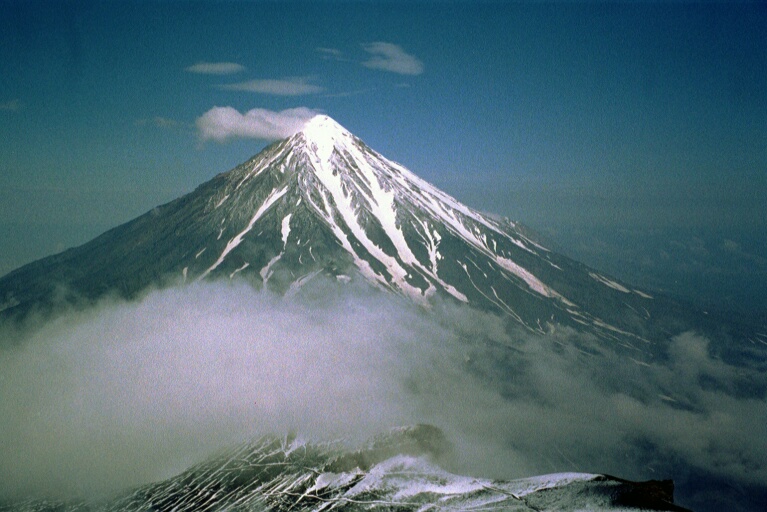
The common mental image of a volcano is that of a steep symmetrical cone sweeping upward in a concave curve to a sharp summit peak. The Koryakski volcano is the archetypal volcanic landform, but only a few volcanoes attain this ideal shape. The shape and size of a volcano are controlled by several factors. These include the volume of volcanic products, the composition of volcanic products, the sequence of eruption (e.g., many small eruptions with short repose times between eruptions, or a few large eruptions with long repose times), the variety of volcanic eruption types, the geometry of the vent, and the environment into which the volcanic products are erupted.
The beautiful symmetrical shape of the Koryakski volcano indicates a long record of moderately explosive eruptions from its summit, the eruptions generally consisting of explosions of fragments followed by thick viscous lava flows. Such alternating layers of ash and lava make up the strata denoted by the name stratovolcano. They are not layers in a blanketlike sense, however, but are overlapping lobes or tongues of ash and lava. For this reason, many geologists refer to the stratovolcanoes as composite volcanoes. A gently sloping shield volcano is formed, when fluid lava flows from summit and radial fissures, e.g. Mauna Loa in Hawaii. Iceland provides fine examples of volcanic plateaus. There the distribution of long parallel fissures and voluminous eruptions of fluid basaltic lava usually build up a thick lava plateau rather than a single volcanic edifice. Kamchatka is the only area in the world, where all the main types of the volcanoes could be found.
